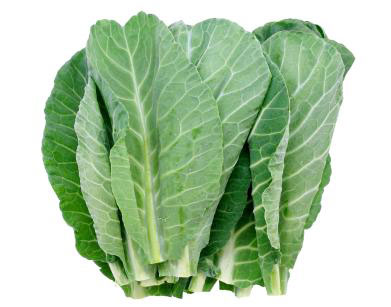
Written By: Sofia Layarda, MPH
Title: Master of Public Health
Alumni: University of California, Berkeley
Last Updated on:

What if we told you that it’s possible to find in-season leafy green vegetables in the depths of winter? Often considered staple greens in the Deep South, collards are one of the few greens that are at their best between January and April, and have become more available across the country due to their growing popularity. Just when you thought you couldn’t have anything other than root vegetables!

Collard greens belong to the same family of vegetables as broccoli and cauliflower, but do not form “heads.” Instead, collard greens have broad, flat, dark green leaves that are high in fiber and packed full of nutrients. One cup of these greens provides more than 100% of the daily recommended intake for Vitamins K and A, and 50% of the daily recommended intake of Vitamin C and folate. It is also high in manganese and various phytonutrients that appear to have chemopreventive (cancer-preventing) properties.
Because collard greens withstand more intense cooking than many vegetables, traditional Southern recipes for collard greens often involve braising or slow-cooking the leaves in a broth infused with smoked bacon or ham hocks (the more health-conscious cooks nowadays substitute smoked turkey meats). When preparing collard greens for cooking, wash the leaves well because they tend to collect soil.
Alumni: University of California, Berkeley – Sofia believes in bringing back fun and pleasure into everyday eating. She loves cooking, and is constantly experimenting with ingredients, creating recipes and trying them out on family and friends. Her latest interest lies in finding realistic and practical ways of environmentally-friendly food/eating habits.
collard greens, fiber, grocery aisle, healthy every month, vegetables, vitamin a, vitamin k
Safer and Lesser-Known Fish Choices – Good for You, Good for the Oceans